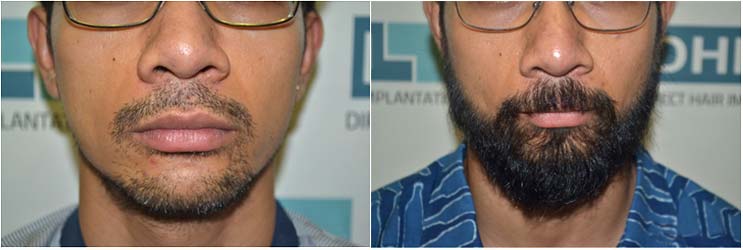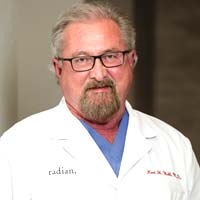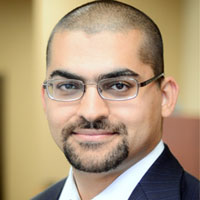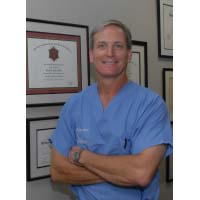Beard Transplant using DHI Technique
Having patchy or scant beard is a very common problem but there has not been any treatment for beard hair restoration till recently. With hair transplant, beard hair restoration
has become a reality albeit one has to be very cautious before going for one.
Just
like a normal hair transplant, the hair follicles are taken from the scalp of
the patient (from the back and sides, as this area forms the safe donor area). These hairs are then implanted in the face to
create a beard.
Depending
on the look one wants to achieve, patchy areas can be filled, and you can choose to design a thick and sculpted beard.
Even
though the process sounds very simple, it is very complicated due to the
following reasons.
Implanting
facial hair is not an easy task unless the doctor is highly trained. The beard grows in a unique way and the hairs are placed at a unique angle. Implantation requires very precise grid planning, and mathematical calculation of how many hairs are to be implanted in each grid.
While
designing the beard line, the doctor has to be very artistically oriented and keep the natural irregularities of a beard in mind. Otherwise the result could look very natural.
It is also very important to understand what is the technique used by the doctor for implanting hairs in the beard area. Most doctors create slits with scalpels in which the extracted hairs are inserted. This technique unfortunately gives visible scars on the face and gives very unnatural results as there is
very little control on the angle depth and direction of the implanted hair.
DHI Beard Transplant
With
the DHI technique, it is now possible to transplant hair to any part of the body and the face. One can achieve a thick, full and natural beard with DHI’s beard transplants. Depending on your goals, DHI can add a filling to a smaller area, to cover patchiness, or achieve a thick, full beard.
Transplanted hair follicles are picked one by one to match the beard; and with DHI’s patented devise, there is complete control over the angle, depth and the direction of the implanted hair, for achieving 100% natural results.
For example, see the following case of beard transplant of a patient Abhirup Paul, at a DHI clinic.

The
doctor at DHI thoroughly designs the beard area according to the needs of the patient, and the defined symmetry.
The number of the required hairs and the kind of follicle grafts required for natural result and density are counted. The required hair follicles are extracted from the donor area (usually the back of the head). The extracted hair follicles are placed into the beard area. (
Beard restoration with DHI restores the natural hair on the beard and the mustache.
The implanted hair will grow throughout a person’s lifetime.
Advantages of beard transplant with DHI technique:
1.
Permanent
results that last a lifetime
2.
No
scalpel, no stitches and no scarring
3.
Natural
results that look and feel great
Whether you simply need some patchiness covered up, a fuller moustache or a complete
beard, DHI can create the look for you. The first step is to have a
confidential consultation to ask any questions you have and discuss options. DHI’s
treatment options are personalised to individual requirements, based on sound
medical knowledge and experience.
Hairfear
Frequently asked questions about hair transplant procedures
How much does a hair transplant cost?
Hair transplants can vary in price based off of the area in the world that you are interested in getting a hair transplant as well as the size of the area where you may need a hair transplant. Experienced doctors in the United States will often charge some of the highest prices for a hair transplant worldwide and this is why so many travelers make the move to other parts the world like Turkey, India, Thailand, Mexico...etc for their hair transplants.
Will a hair transplant hurt?
Although hair transplants may look like a particularly
unpleasant or painful experience is actually very little discomfort involved
with the surgery itself. Hair transplants are always done under an anesthetic so there's absolutely zero pain during the treatment itself. Many people actually relate the process as being very similar to going to the dentist for filling or root canal. Mild pain can persist over the course of postop treatment but he generally just resumes for a few days.
Who can deliver the best surgery?
It's usually best to consider working with surgeons who have and IAHRS certification or international alliance of hair restoration surgeons recognition. IAHRS can often deliver recommendations for the best surgeons in each particular area.
Is this scarring noticeable?
Any type of hair transplant will require the use of incisions throughout the scalp. There can also sometimes be a small scar from the donor area towards the back of the scalp. Asking to look at photos of the surgeon's previous work will help you to see roughly how bad the scarring could be. In most cases an experienced professional can limit the look of scarring and noticeable marks from the surgery.
How long does it take for the hair to grow?
In most cases hair growth will start within eight months and you can start to see a full effect from the hair transplant after a full year. The initial signs of growth can usually start between 3 to 4 months after the surgery.
Are the results permanent?
The hair follicles that are transplanted are generally the ones which are genetically resistant against the symptoms of baldness. As long as you receive hair loss treatment later in your life after the symptoms of balding have started to subside, you can have a better chance at permanent results.
While everyone know you've had surgery?
If you want to limit the chance that people may find out about your surgery it's important to give at least three weeks of healing as the surgical area will be affected and red just after surgery. After around a month of healing it can look far less noticeable. You could consider wearing a hat while time passes or opting for some extra time off if possible.
How long should I rest after surgery?
It's recommended to rest for at least a few days after surgery so that your body can recover. Trenton to over exert yourself and limit sexual activity, running in the gym for around 10 days after surgery.
Is it possible to lose more hair as a result of surgery?
There is always a chance of shock loss which happens when the hair is weak and miniaturizing after the surgery. As long as the surgeon is choosing the correct hair follicles and performing the surgery well it's possible to minimize the chance of this happening however.
Will I need another hair transplant?
The need for another transplant really depends on the individual. With a solid foundation surgery and working to potentially bolster results with drug therapy, you can improve the stability of the hair that was transplanted as well as prevent further loss. Getting a hair transplant early
on in your 20s or early on in life could lead to needing long-term transplants as hair loss can be progressive.








